AR-15 Barrels
AR-15 Barrels For Sale
AR-15 Barrels from Black Rifle Depot offer a wide range of options for your next build or upgrade. With a variety of brands to choose from, including some of the industry's most trusted names, you can find the perfect barrel to meet your specific needs. Available in a range of lengths, from 7 inches to 24 inches, you can select the perfect length for your desired shooting style or application. And with different calibers available, including 5.56 NATO, .223 Remington, and 300 Blackout, you can choose the right barrel for your desired performance. Whether you're looking to upgrade your current rifle, or starting a new build, Black Rifle Depot has the perfect AR-15 Barrel for you.
- Product
- Qty in Cart
- Quantity
- Price
- Subtotal
-
Out of stock

Ballistic Advantage 22" 22 ARC Bull Rifle+1 Stainless Steel Black Nitride Premium Black Series Barrel
Ballistic Advantage
MSRP: $295.00$280.25Ballistic Advantage 22" 22 ARC Bull Rifle+1 Stainless Steel Black Nitride Premium Black Series Barrel This 22” 22 ARC barrel is machined from 416 Stainless Steel with a bead blasted finish. Our Premium Series Barrels feature a Nickel Boron Coated...MSRP: $295.00$280.25 -
Out of stock

Ballistic Advantage 22" 22 ARC Bull Rifle+1 Stainless Steel Premium Series Barrel
Ballistic Advantage
MSRP: $295.00$280.25Ballistic Advantage 22" 22 ARC Bull Rifle+1 Stainless Steel Premium Series Barrel This 22” .22 ARC barrel is machined from 416 Stainless Steel with a bead blasted finish. Our Premium Series Barrels feature a Nickel Boron Coated Extended M4 Feed...MSRP: $295.00$280.25 -

Ballistic Advantage 22" 22 ARC DMR Fluted Rifle Stainless Steel Premium Series Barrel
Ballistic Advantage
MSRP: $325.00$314.95Ballistic Advantage 22" 22 ARC DMR Fluted Rifle Stainless Steel Premium Series Barrel This 22” 22 ARC barrel is machined from 416 Stainless Steel with a bead blasted finish. Our Premium Series Barrels feature a Nickel Boron Coated Extended M4 Feed...MSRP: $325.00$314.95 -
Out of stock

Ballistic Advantage 24" 22 ARC Bull Rifle+1 Stainless Steel Black Nitride Premium Black Series Barrel
Ballistic Advantage
MSRP: $305.00$289.95Ballistic Advantage 24" 22 ARC Bull Rifle+1 Stainless Steel Black Nitride Premium Black Series Barrel This 24” 22 ARC barrel is machined from 416 Stainless Steel with a QPQ finish. Our Premium Series Barrels feature a Nickel Boron Coated Extended...MSRP: $305.00$289.95 -

Ballistic Advantage 24" 22 ARC Bull Rifle+1 Stainless Steel Premium Series Barrel
Ballistic Advantage
MSRP: $305.00$289.75Ballistic Advantage 24" 22 ARC Bull Rifle+1 Stainless Steel Premium Series Barrel This 24” 22 ARC barrel is machined from 416 Stainless Steel with a bead blasted finish. Our Premium Series Barrels feature a Nickel Boron Coated Extended M4 Feed...MSRP: $305.00$289.75 -
Out of stock
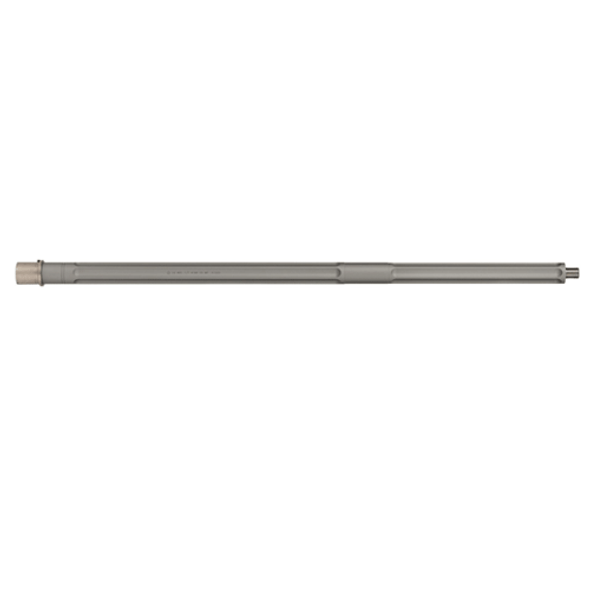
Ballistic Advantage 24" 22 ARC DMR Fluted Rifle Stainless Steel Premium Series Barrel
Ballistic Advantage
MSRP: $345.00$329.95Ballistic Advantage 24" 22 ARC DMR Fluted Rifle Stainless Steel Premium Series Barrel This 24” 22 ARC barrel is machined from 416 Stainless Steel with a bead blasted finish. Our Premium Series Barrels feature a Nickel Boron Coated Extended M4 Feed...MSRP: $345.00$329.95 -
Out of stock

Ballistic Advantage 4.5" 9mm Modern Series Barrel
Ballistic Advantage
MSRP: $105.00$99.95Ballistic Advantage 4.5" 9mm Modern Series Barrel This 9mm chambered 4.5 inch Modern Series Barrel is machined from 4150 Chrome Moly Vanadium steel with a QPQ Corrosion Resistant Finish and 1/2-28 x .400 full profile threads. Features: Designed to work...MSRP: $105.00$99.95 -

Ballistic Advantage 8" .300 Blackout Pistol Length Modern Series Barrel
Ballistic Advantage
MSRP: $155.00$147.25Ballistic Advantage 8" .300 Blackout Pistol Length Modern Series Barrel This .300 Blackout chambered 8 inch Modern Series Barrel is machined from 4150 Chrome Moly Vanadium steel with a QPQ Corrosion Resistant Finish and QPQ coated M4 feed ramp extension...MSRP: $155.00$147.25 -

Ballistic Advantage 8" 5.56 NATO Modern Series Barrel
Ballistic Advantage
MSRP: $120.00$114.00Ballistic Advantage 8" 5.56 NATO Modern Series Barrel This 5.56 chambered 8 inch Modern Series Barrel is machined from 4150 Chrome Moly Vanadium steel with a QPQ Corrosion Resistant Finish and QPQ coated M4 feed ramp extension. All NFA/ATF Rules...MSRP: $120.00$114.00 -
Out of stock

Ballistic Advantage 8" 8.6 BLK DRP Pistol Black Nitride Stainless Steel Premium Black Series Barrel
Ballistic Advantage
MSRP: $255.00$244.95Ballistic Advantage 8" 8.6 BLK DRP Pistol Black Nitride Stainless Steel Premium Black Series Barrel This 8.6 Blackout 8.3-inch barrel is machined from 416R Stainless Steel with a QPQ Corrosion-resistant finish. Our Premium Black Series 8.6 Blackout...MSRP: $255.00$244.95 -
Out of stock
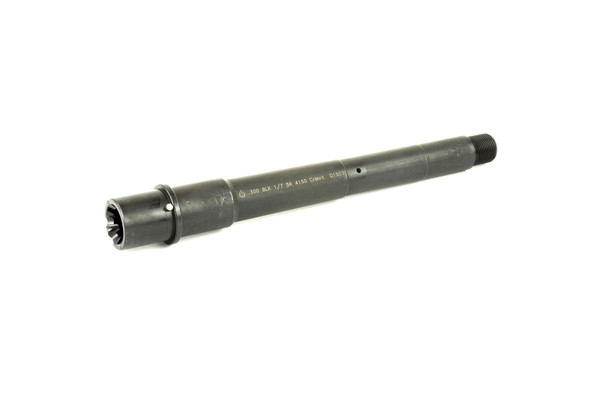
Ballistic Advantage 9 .300 BLK Pistol Length Nitride Modern Series Barrel
Ballistic Advantage
MSRP: $160.00$152.00Ballistic Advantage 9 .300 BLK Pistol Length Nitride Modern Series Barrel Ballistic Advantage is a state of the art manufacturer which crafts superior barrels and components in conjunction with their partner Aero Precision. Every barrel is precision...MSRP: $160.00$152.00 -
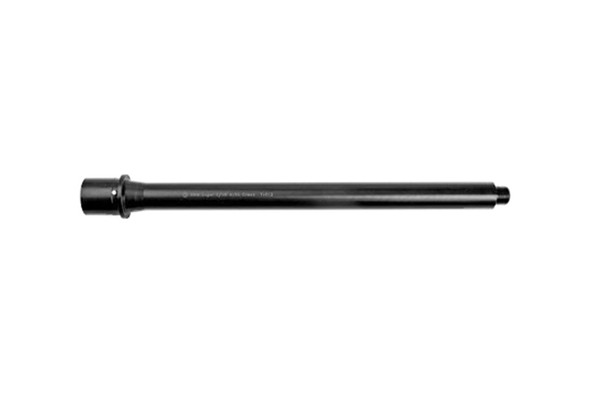
Ballistic Advantage AR-15 11" 9MM Barrels - Black
Ballistic Advantage
MSRP: $135.00$128.25Ballistic Advantage AR-15 11" 9MM Barrels - Black This 9mm chambered 11 inch Modern Series Barrel is machined from 4150 Chrome Moly Vanadium steel with a QPQ Corrosion Resistant Finish and 1/2-28 x .620 full profile threads. Designed to work with both...MSRP: $135.00$128.25 -
Out of stock
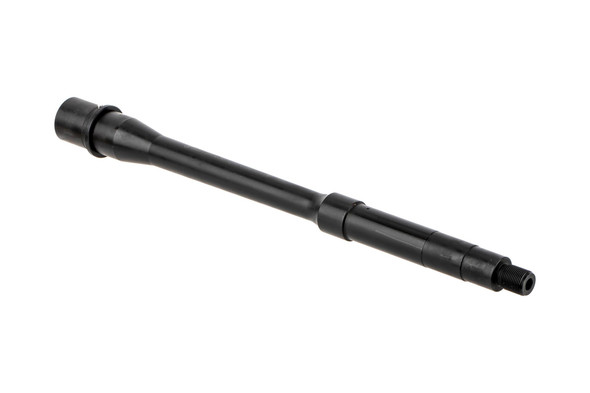
Ballistic Advantage Modern Series 5.56 Barrel Gov. Carbine - 11.5"
Ballistic Advantage
MSRP: $145.00$137.75Ballistic Advantage Modern Series 5.56 Barrel Gov. Carbine - 11.5" Chambered in 5.56 NATO, this Ballistic Advantage 11.5” barrel is a great option for building a short barrel rifle or even a pistol. This modern series barrel features all the...MSRP: $145.00$137.75 -
Out of stock

Battle Arms Battlearms Lightweight 8.5" 9x19mm 4140 Barrel
Battle Arms Development
MSRP: $139.00$133.95Battle Arms Battlearms Lightweight 8.5" 9x19mm 4140 Barrel Battle Arms Development Lightweight 9MM 8.5 Barrel 1 2x36 Threaded Nitride Finish Black Fits AR Rifles A-BBL8.5T9MM1-10BN. High quality components and precise manufacturing make Battle Arms...MSRP: $139.00$133.95 -
Out of stock

Battle Arms Lightweight 16" 9x19mm 4140 Barrel
Battle Arms Development
MSRP: $165.00$149.99Battle Arms Lightweight 16" 9x19mm 4140 Barrel Features: Length: 16in Thread Pitch: 1/2x36 Twist: 1:10 Finish: Black Nitride Material: 4140 Lightweight Barrel Profile Improved Feed Ramp 1/2 - 36 muzzle threads for compatibility with most 9mm...MSRP: $165.00$149.99 -
Out of stock
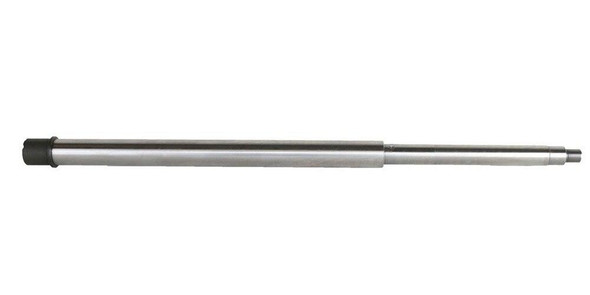
Bear Creek Arsenal 20" 6.5 Grendel Type II AR 15 Barrel
Bear Creek Arsenal
$139.95Bear Creek Arsenal 20" 6.5 Grendel Type II AR 15 Barrel The Bear Creek Arsenal AR-15 Barrel is a 20" heavy barrel profile made of 416R stainless steel. rifle length gas system with a 1:8 twist rate and is chambered in 6.5 Grendel Type II. All...$139.95 -

Bootleg Inc. 12.5 5.56 NATO 1:7 Twist Black Nitride Carbine Barrel
Bootleg Inc.
$179.95Bootleg Inc. 12.5 5.56 NATO 1:7 Twist Black Nitride Carbine Barrel Bootleg Inc. is now offering their own line of barrels, that are built to their exact specifications and built to last! Specifications: Barrel Material: 4150 CMV Steel Barrel Caliber: 5...$179.95 -
Out of stock
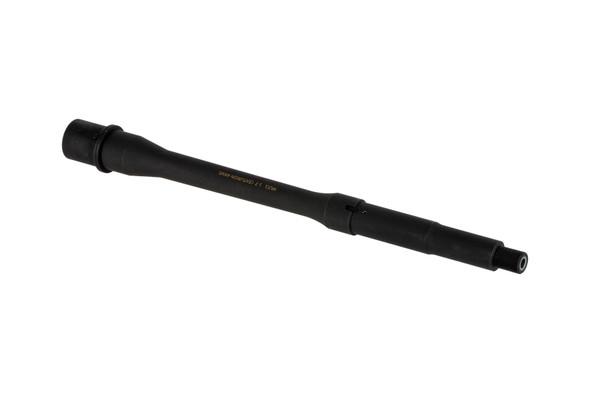
Centurion Arms Hammer Forged 5.56 Carbine Barrel - 11.5"
Centurion Arms
$275.00The Centurion Arms cold hammer forged 5.56 AR-15 barrels are made from high quality 41V50 Chrome Moly Vanadium—steel specifically designed for machine gun barrels—so you know it will last thousands of rounds. In order to get the 1:7 twist...$275.00 -
Out of stock

Centurion Arms Hammer Forged 5.56 Lightweight Mid-Length Barrel - 16"
Centurion Arms
$275.00The Centurion Arms cold hammer forged 5.56 AR-15 barrels are made from high quality 41V50 Chrome Moly Vanadium—steel specifically designed for machine gun barrels—so you know it will last thousands of rounds. In order to get the 1:7 twist...$275.00 -
Out of stock

Centurion Arms Hammer Forged 5.56 Mid-Length Barrel - 14.5"
Centurion Arms
MSRP: $275.00$270.95Centurion Arms Hammer Forged 5.56 Mid-Length Barrel - 14.5" The Centurion Arms cold hammer forged 5.56 AR-15 barrels are made from high quality 41V50 Chrome Moly Vanadium—steel specifically designed for machine gun barrels—so you know it will...MSRP: $275.00$270.95 -
Out of stock

Centurion Arms Midweight Hammer Forged 5.56 Carbine Barrel - 10.3"
Centurion Arms
$275.00The Centurion Arms cold hammer forged 5.56 AR-15 barrels are made from high quality 41V50 Chrome Moly Vanadium—steel specifically designed for machine gun barrels—so you know it will last thousands of rounds. In order to get the 1:7 twist...$275.00 -
Out of stock
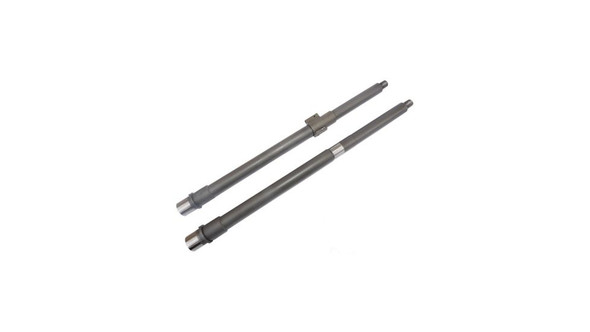
Centurion Arms MK12 18 5.56 NATO 1:7 R5 416R Stainless Steel Rifle Length Barrel
Centurion Arms
$450.00Centurion Arms MK12 Rifle Barrels are the result of development done by the U.S. government to give Special Operations forces the best possible weapon system. Troops who have carried these Rifle Barrels from Centurion Arms give them high marks for...$450.00 -
Out of stock

Centurion Arms MK12 18" 5.56 NATO 1:7 416R Stainless Steel Rifle Length Barrel
Centurion Arms
MSRP: $450.00$427.95Centurion Arms MK12 18" 5.56 NATO 1:7 416R Stainless Steel Rifle Length Barrel These are Crane Spec. MK12 barrels. These barrels are the result of tens of thousands of dollars in development done by the U.S. government to give our Special Operations guys...MSRP: $450.00$427.95 -
Out of stock

Centurion Arms RECCE 5.56 NATO 1:7 R5 416R Stainless Steel Mid-Length Barrel
Centurion Arms
$409.95 - $425.00Centurion Arms RECCE 5.56 NATO 1:7 R5 416R Stainless Steel Mid-Length Barrel These are produced with the same chamber as our Spec. MK12 barrels with a slightly heavier profile. Built for reliability and accuracy. Best option for long range, high...$409.95 - $425.00 -
Out of stock

CMMG 16.1" 300 AAC Blackout AR 15 Barrel
CMMG
$199.95CMMG 16.1" 300 AAC Blackout AR 15 Barrel The CMMG 16.1" 300 AAC Blackout AR 15 Barrel is perfect for building your custom AR15 upper group. Comes with properly installed M4 barrel extension. All barrel sub-assemblies are properly head spaced...$199.95 -
Out of stockOn Sale
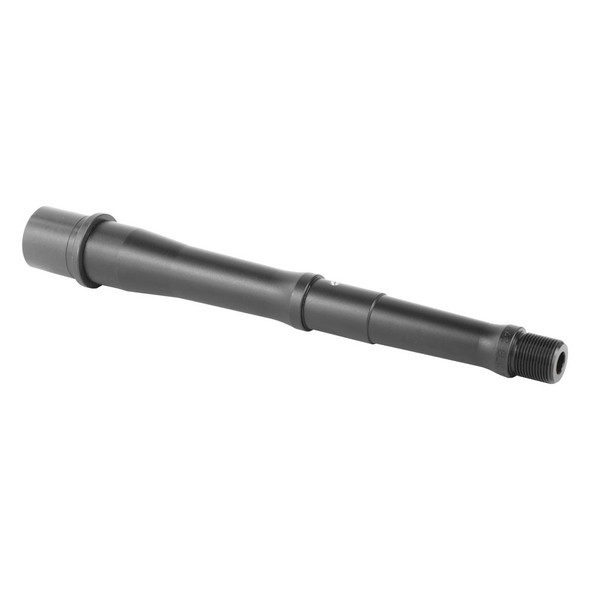
CMMG 8" 300 AAC Blackout AR 15 Barrel
CMMG
Now: $169.95Was: $174.95CMMG 8" 300 AAC Blackout AR 15 Barrel Perfect for building your custom AR15 upper group. Comes with properly installed M4 barrel extension. All barrel sub-assemblies are properly headspaced. ALL NFA RULES APPLY Features: 8.0" Medium Taper...Now: $169.95Was: $174.95 -
Out of stock

Criterion Barrels 10.5" .223 Wylde Core Phosphate/Chrome-Lined Carbine Length Barrel
Criterion Barrels
MSRP: $329.99$313.95Criterion Barrels 10.5" .223 Wylde Core Phosphate/Chrome-Lined Carbine Length Barrel Optimized Weight Distribution and Superior Performance for Tactical Shooters. The Criterion Barrels 10.5" .223 Wylde CORE Phosphate/Chrome-Lined Carbine Length Barrel is...MSRP: $329.99$313.95 -
Out of stock

Criterion Barrels 10.5" .223 Wylde Hybrid Phosphate/Chrome-Lined Carbine Length Barrel
Criterion Barrels
MSRP: $329.99$317.95Criterion Barrels 10.5" .223 Wylde Hybrid Phosphate/Chrome-Lined Carbine Length Barrel Compact Precision and Reliability with a Balanced Hybrid Contour. The Criterion Barrels 10.5" .223 Wylde Hybrid Phosphate/Chrome-Lined Carbine Length Barrel is...MSRP: $329.99$317.95 -
Out of stock

Criterion Barrels 10.5" .300BLK Hybrid Nitride Pistol Length Barrel
Criterion Barrels
MSRP: $279.99$250.95Criterion Barrels 10.5" .300BLK Hybrid Nitride Pistol Length Barrel Optimized for Suppressed and Unsuppressed Fire with Superior Heat Absorption and Balance. The Criterion Barrels 10.5" .300 BLK Hybrid Nitride Pistol Length Barrel is engineered to...MSRP: $279.99$250.95 -
Out of stock

Criterion Barrels 11.5" .223 Wylde Core Phosphate/Chrome-Lined Carbine Length Barrel
Criterion Barrels
MSRP: $329.99$313.95Criterion Barrels 11.5" .223 Wylde Core Phosphate/Chrome-Lined Carbine Length Barrel Optimized Weight Distribution and Precision for Tactical and Field Use. The Criterion Barrels 11.5" .223 Wylde CORE Phosphate/Chrome-Lined Carbine Length Barrel is built...MSRP: $329.99$313.95 -
Out of stock

Criterion Barrels 11.5" .223 Wylde Hybrid Phosphate/Chrome-Lined Carbine Length Barrel
Criterion Barrels
MSRP: $329.99$317.95Criterion Barrels 11.5" .223 Wylde Hybrid Phosphate/Chrome-Lined Carbine Length Barrel Compact and Balanced Performance for Versatile Tactical Applications. The Criterion Barrels 11.5" .223 Wylde Hybrid Phosphate/Chrome-Lined Carbine Length Barrel is...MSRP: $329.99$317.95 -
Out of stock

Criterion Barrels 12.5" .223 Wylde Core Phosphate/Chrome-Lined Carbine Length Barrel
Criterion Barrels
MSRP: $329.99$317.95Criterion Barrels 12.5" .223 Wylde Core Phosphate/Chrome-Lined Carbine Length Barrel Optimized Weight Distribution and Superior Handling for Tactical Applications. The Criterion Barrels 12.5" .223 Wylde CORE Phosphate/Chrome-Lined Carbine Length Barrel...MSRP: $329.99$317.95 -
Out of stock

Criterion Barrels 12.5" .223 Wylde Hybrid Phosphate/Chrome-Lined Carbine Length Barrel
Criterion Barrels
MSRP: $329.99$317.95Criterion Barrels 12.5" .223 Wylde Hybrid Phosphate/Chrome-Lined Carbine Length Barrel Uncompromising Accuracy and Durability in a Compact Hybrid Design. The Criterion Barrels 12.5" .223 Wylde Hybrid Phosphate/Chrome-Lined Carbine Length Barrel offers...MSRP: $329.99$317.95 -

Criterion Barrels 12.5" .223 Wylde Ultralight Phosphate/Chrome-Lined Carbine Length Barrel
Criterion Barrels
MSRP: $329.99$317.95Criterion Barrels 12.5" .223 Wylde Ultralight Phosphate/Chrome-Lined Carbine Length Barrel Maximum Mobility and Lightweight Performance for Hard Use Scenarios. The Criterion Barrels 12.5" .223 Wylde Ultralight Phosphate/Chrome-Lined Carbine Length Barrel...MSRP: $329.99$317.95 -
Out of stock

Criterion Barrels 13.9" .223 Wylde Hybrid Phosphate/Chrome-Lined Midlength Barrel
Criterion Barrels
MSRP: $329.99$317.95Criterion Barrels 13.9" .223 Wylde Hybrid Phosphate/Chrome-Lined Midlength Barrel Balanced Precision and Durability for Tactical, Field, and Competition Use. The Criterion Barrels 13.9" .223 Wylde Hybrid Phosphate/Chrome-Lined Midlength Barrel is...MSRP: $329.99$317.95 -
Out of stock

Criterion Barrels 14.5" .223 Wylde Core Phosphate/Chrome-Lined Midlength Barrel
Criterion Barrels
MSRP: $329.99$313.95Criterion Barrels 14.5" .223 Wylde Core Phosphate/Chrome-Lined Midlength Barrel Optimized Weight Distribution and Precision for Tactical Performance. The Criterion Barrels 14.5" .223 Wylde CORE Phosphate/Chrome-Lined Midlength Barrel is designed to meet...MSRP: $329.99$313.95 -
Out of stock

Criterion Barrels 14.5" .223 Wylde Hybrid Phosphate/Chrome-Lined Midlength Barrel
Criterion Barrels
MSRP: $329.99$313.95Criterion Barrels 14.5" .223 Wylde Hybrid Phosphate/Chrome-Lined Midlength Barrel Precision, Durability, and Lightweight Performance for Your AR-15 Build. The Criterion Barrels 14.5" .223 Wylde Hybrid Phosphate/Chrome-Lined Midlength Barrel is engineered...MSRP: $329.99$313.95 -
Out of stock

Criterion Barrels 14.5" .223 Wylde Ultralight Phosphate/Chrome-Lined Midlength Barrel
Criterion Barrels
MSRP: $329.99$317.95Criterion Barrels 14.5" .223 Wylde Ultralight Phosphate/Chrome-Lined Midlength Barrel Lightweight Durability and Precision for Versatile AR-15 Builds. The Criterion Barrels 14.5" .223 Wylde Ultralight Phosphate/Chrome-Lined Midlength Barrel is the ideal...MSRP: $329.99$317.95 -
Out of stock

Criterion Barrels 16" .223 Wylde Core Phosphate/Chrome-Lined Midlength Barrel
Criterion Barrels
MSRP: $329.99$313.95Criterion Barrels 16" .223 Wylde Core Phosphate/Chrome-Lined Midlength Barrel Our CORE Series barrels are designed with tactical shooters in mind. These barrels are built to address issues with weight distribution, balance, and handling of traditional...MSRP: $329.99$313.95 -
Out of stock

Criterion Barrels 16" .223 Wylde HBAR Phosphate/Chrome-Lined Midlength Barrel
Criterion Barrels
MSRP: $329.99$317.95Criterion Barrels 16" .223 Wylde HBAR Phosphate/Chrome-Lined Midlength Barrel Superior Rigidity and Heat Absorption for High-Performance Shooting. The Criterion Barrels 16" .223 Wylde HBAR Phosphate/Chrome-Lined Midlength Barrel is built for shooters who...MSRP: $329.99$317.95
Frequently Asked Questions About AR-15 Barrels
- What is the best barrel length for an AR-15?
The best barrel length depends on your intended use. A 16-inch barrel is the most versatile and common option, offering a balance between velocity, accuracy, and maneuverability. Longer barrels, such as 18-20 inches, are ideal for precision shooting and extended range, while shorter barrels under 16 inches (NFA regulations apply) are better for close-quarters use and lightweight builds. - What is the difference between a chrome-lined and a non-chrome-lined barrel?
Chrome-lined barrels are coated internally to improve durability and resist corrosion, making them ideal for high-volume or adverse conditions. Non-chrome-lined barrels, such as nitrided or untreated options, often provide slightly better accuracy due to their smoother internal surface but may wear faster with heavy use. - What does barrel twist rate mean, and how does it affect performance?
The twist rate refers to the rate at which the rifling inside the barrel spins the bullet, expressed as a ratio (e.g., 1:8). It determines the stability of different bullet weights. A 1:8 twist rate is versatile, stabilizing a wide range of bullet weights from 35 to 77 grains. A 1:7 twist is optimal for heavier bullets, while 1:9 is better suited for lighter projectiles. - Should I choose a stainless steel or chrome-moly steel barrel?
Stainless steel barrels are preferred for precision shooting due to their tight tolerances and superior accuracy, though they may wear out faster under high-volume shooting. Chrome-moly steel barrels are more durable and handle heat better, making them a better choice for general-purpose or high-round-count use. - What is the advantage of a fluted AR-15 barrel?
Fluting reduces a barrel’s weight while maintaining its rigidity, improving balance and reducing fatigue during extended use. While the increased surface area of fluting may aid in cooling slightly, the primary advantage is the weight reduction without sacrificing strength. - What are the pros and cons of a heavy (bull) barrel vs. a lightweight barrel?
A heavy barrel offers greater stability, heat resistance, and reduced barrel whip, making it ideal for precision shooting and sustained fire. However, it adds significant weight, reducing maneuverability. A lightweight barrel enhances portability and is better suited for dynamic shooting scenarios but may heat up faster and is less stable for precision shooting. - What is a free-floating barrel, and how does it impact accuracy?
A free-floating barrel is not in contact with the handguard, allowing it to vibrate naturally without interference. This design improves accuracy by eliminating pressure points and inconsistencies caused by external forces on the barrel. - What is the difference between a carbine, mid-length, and rifle-length gas system?
The gas system length affects cycling and recoil. A carbine-length system is designed for shorter barrels and produces sharper recoil due to higher gas pressure. Mid-length systems are optimized for 14.5-16 inch barrels, providing smoother operation and reduced wear. Rifle-length systems work best with barrels 18 inches or longer, offering the softest recoil and most consistent cycling. - What type of barrel profile is best for an AR-15?
The best profile depends on your intended use. Lightweight or pencil profiles are ideal for reducing weight and improving handling, while heavy profiles provide better heat resistance and accuracy under sustained fire. Hybrid profiles, such as SOCOM or government profiles, offer a balance of weight and durability. - What are the benefits of a carbon fiber AR-15 barrel?
Carbon fiber barrels combine a lightweight design with exceptional rigidity and heat dissipation. They provide the accuracy of a heavy barrel without the extra weight, making them a top choice for shooters who prioritize performance and portability. However, they tend to be more expensive than traditional steel barrels.
